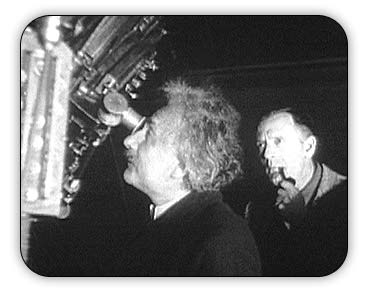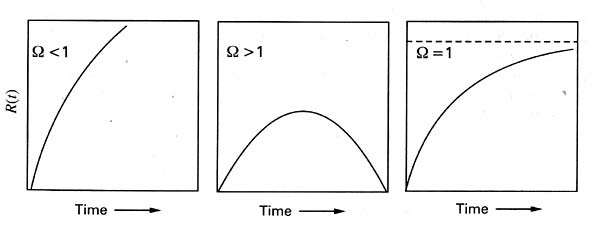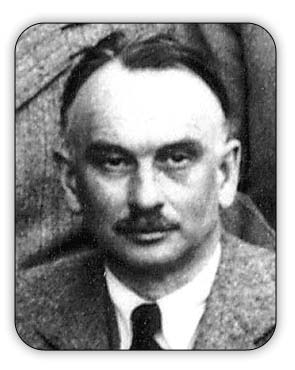 |
 |
 |
Volume
6 - Issue 03
MARCH - 2008 |
IN QUEST OF INFINITY – 14 By Prof. G. Venkataraman
Loving Sai Ram and greetings from Prashanti Nilayam. We are now at a very interesting stage in our understanding of the Cosmos. Before I take you further, I do hope you recall what I ended with last time; it was all about what is called the Cyclic Model of the Universe. You may recall that we got focussed on the Cyclic Model because that is what Paul Steinhardt and Neil Turok were trying to develop, basing themselves not on the traditional approaches, but on String Theory and its extensions, especially the M Theory [QFI - 12]. I also pointed out that the so-called Cyclic Model has a long history, going back to ancient times, when it was aired as a concept rather than as a scientific theory [QFI - 13]. The Cyclic Model of the Universe I now want to say something about how the Cyclic Model came to be considered by scientists in modern times and what happened thereafter. There are two aspects to the story of the Cyclic Model before the entry of Paul and Neil into the ring. The first relates to the early days after Einstein developed his theory of gravitation, and the second relates to the period when analysis of the history of the Universe came to be done with more inputs that provided by gravitation alone. These are ideas that need some explanation and that is what I shall now attend to.
You might recall my mentioning earlier that in the early part of the 20th century, scientists literally took the Universe for granted and did not bother much about how big it was, when it came into existence etc. In fact, at that time, it was even believed that the Milky Way was all there is to the Universe – that is to say the entire Universe consisted of just one galaxy! Can you imagine that! And then, quickly things began to happen, events that were seemingly disconnected; the connection between the dots was to become evident later. There was Einstein, who in 1915 gave his epoch-making theory of gravitation that made Newton ’s earlier theory into a poor village cousin. And around 1919 or so – I have described this exciting story earlier – there was experimental proof that Einstein was indeed right with his theory, and overnight he attained almost a rock-star status [that he retained till the end of his life! – see, for example QFI - 05]. Meanwhile, astronomers discovered that our Universe had more than one galaxy; in fact, it soon became evident that there were billions of them! Amazing!! Just a few years prior to this, everyone thought there was only one galaxy and now we had billions! In other words, the Universe was far, far bigger than we had earlier imagined it to be. The story does not stop here. Having discovered his famous equations of general relativity, Einstein begins to work them, as they say. He said, “Let me try and apply these equations to the whole of the Universe and see what I get.” He did that and lo and behold, he got something he simply did not like! His equations told him, “Hey Prof! You know what?! The Universe is expanding!” The venerable Prof was simply horrified by what his own equations told him. He muttered, “Yuk! This can’t be true! The Universe always was and always would be, exactly as the Good Lord willed it to be. Something is wrong with my equations and so let me fix it.” Watch Out Einstein! Expanding Galaxies
So how does the Prof fix his equations which he thought were traitorous to him? By introducing a constant Λ [Greek letter lambda, upper case] called the Cosmological Constant. And when he did that, Einstein found that his equations were quite well-behaved, meaning that they now no longer allowed the Universe to expand as it pleased. The Universe was steady and disciplined! Einstein was happy, put down his pencil and reached for his pipe to relax. But he could not relax for long; why? Because he got the news that in far away America, an astronomer named Hubble was reporting that our Universe was by no means steady but expanding, and fairly fast too! This was too much. First there was more than one galaxy and now the Universe was far from steady; in fact, it was becoming obese! Einstein was shattered. He went back to the drawing board as they say, and stared at his equations, the version 1.0 that had no Λ, and version 2.0 that had a fix, that is to say, boasted of Λ. Slowly shaking his head, the Prof took a red pencil, cut out the Cosmological Constant Λ, dumped version 2.0 and went back to what he had first, namely the original equations without Λ. As he did so, he muttered [in German of course], “Boy! What a lousy mistake I did!! That was the biggest blunder of my life ever. From now on, I had better be careful; also I should make sure that people forget that I ever goofed this badly.” Three Possible Universes All that story I have told you before and also how people did not forget Λ; in fact, this constant, once infamous, came back with a vengeance to be rehabilitated as the source of dark energy [see QFI - 08]. Now why am bringing all this up again? For a good reason. You might recall I had described earlier [see QFI - 02] how soon after Einstein had developed his famous gravitational equations, young Friedman in Russia worked on them and came up with three possible scenarios for the history of the Universe, following its birth. The essence of these three scenarios is captured in the figure below:
Notice the following: In all cases, there is a birth; however, what follows after the birth differs enormously in the three cases. What differentiates the three cases? The amount of matter in the Universe, symbolised by a quantity denoted by the Greek letter Ω. All this we have gone through before. Notice that no matter what choice one makes for Ω, in every case the Universe has a beginning. Now that led to many questions like: “What was there before the Universe? Where did it come from? Who deposited the energy that one now finds in the Universe? From what energy bank was that energy drawn?” A Singular Problem
Here I should draw your attention to a technical problem that always bothers physicists, namely the birth of the Universe from literally a geometrical point. Now you might be aware that in idealised geometry, a point has no size; if you want to describe its radius, you have to say the point has zero radius! Which means that at the instant of birth the Universe had zero radius. And all the matter or energy if you wish that would later become manifest in the Universe was all locked up in this point of zero radius. In turn, this means that at the instant of birth, the Universe had infinite energy density or matter density, depending on how you wish to put it. When you have an infinity in physics, you have what is called a singularity. And physicists are very allergic to singularities in a finite Universe. In this case, we have a singularity at the instant of birth and this has worried people a lot; may be I shall come back to it later. I might add that a lot of modern physics has involved fighting various infinities that appeared on the way as roadblocks to development. Friedmann’s Endless Cycles Let me now get back to older times, to Freidmann in particular. He did not bother about the singularity issue – it was not very prominent in those days. Instead he said, “Well, the way things come out of the present analysis, there is a problem of what was there before the birth of the Universe. Maybe, what I see as just one history involving birth, expansion, then contraction and finally a big crunch, is merely one chapter in an endless scenario. In other words, perhaps the history of the Universe is cyclic – see figure below:
Freidmann’s point was simple. He said, “Listen, in this cyclic scenario, the birth, death and rebirth of the Universe is an endless process. So, the question of what was there just before birth is easily answered; we have another Universe just finishing up!” That is how the cyclic model entered the history of modern physics, almost as a way of avoiding the question: “How did the Universe just pop up out of nowhere?” No doubt there is the philosophical question of who ordered the Cyclic Universe, but Freidmann did not bother about that.
Now there is an important reason why I am mentioning all this. It looks as if Einstein himself was thinking about such a scenario. Before I discuss that, I must now bring in another personality and that is Richard Tolman. Tolman was trained as a physical chemist but when he joined California Institute of Technology [popularly called Caltech] in 1922, he became attracted to cosmology. What happened was this: Tolman heard about the oscillatory model of Freidmann and began to wonder. He said to himself, “If the Universe is a kind of a huge balloon filled with gas say, then as the Universe expands and then contracts, it is like the balloon first expanding and then contracting. Now if it is a gas that is expanding and contracting, then it is subject to the laws of thermodynamics. Maybe, the Universe too is subject to the laws of thermodynamics.” The insight that Tolman brought to this issue is important and requires some explanation, and let me try to do it slowly and in steps. First of all, thermodynamics is that branch of Physics that deal with the macroscopic aspects of heat. The subject has a long history, and is enshrined in two important laws called the First and the Second Law of Thermodynamics. Basically, they are statements related to heat flow and associated issues. They are a part of what is called Classical Physics, and at the working level, they are two great pillars. They have remained intact, not withstanding all the advancement at the micro level; what it means is that while physics at small distances and very short times shows considerable deviations from what Classical Physics would predict, thermodynamics, which works at the macro level, is as strong as ever; no sign of the slightest deviation. What it means is that the Laws of Thermodynamics are not set aside when one considers the macro aspects. The First Law of Thermodynamics - Heat Causes Disorder The First Law says that energy is always conserved, including energy in the form of heat. Sum up the amount of energy in a system that exists in all forms [including heat energy of course], and that total sum does not change with time. The Second Law goes out much farther and makes an even deeper and more profound statement, related to disorder. You see, heat causes disorder; I mean when you heat ice, ice melts – this we all know. What happens is that while in ice the individual molecules of water are all nicely organised on a crystalline lattice, when ice melts, the individual water molecules become free to move around and the beautiful orderly arrangement of the molecules obtained in ice is lost; it is like a military parade, for example. During the parade, there is order and discipline amongst the soldiers. When the parade is dismissed, the order dissolves and the soldiers disperse; the same sort of thing happens when ice melts into water – spatial order decreases. In general, when the temperature of a system is increased, disorder also increases. The word disorder is just a word; in physics, we need measures; if we are talking of disorder, we need some scheme for quantifying it and measuring it. Disorder is quantified using a concept known as entropy; the more the disorder, the greater is the entropy – I hope you get the general idea. The Second Law of Thermodynamics - Entropy of A System Always Increases In Time The Second Law of Thermodynamics concerns disorder in a physical system; it says that in a system that is perfectly isolated and is left to itself, entropy of a system always increases in time. This is a “global” law, meaning the statement applies to the system as a whole; it is quite likely that entropy in particular region might decrease; however, if the system as a whole is considered, the entropy would always be found to increase. The Life Cycles of Universes - In Brief OK, all this is fine but what has cosmology and the oscillatory model of the Universe have to with the Second Law and all that? That is what we shall consider now because that is what Tolman decided to examine. What I shall be offering would be a hand-waving account of how Tolman analysed the issue. He started by asking: “We have this Universe; it is an isolated system, huge no doubt but that does not matter. This system is undergoing changes; what happens?” Tolman then gave this answer: “One thing we know from the Second Law is that the entropy of the Universe would steadily increase. Most of the entropy is in the form of electromagnetic radiation, meaning light, ultraviolet radiation, x-radiation and of course heat or infra-red radiation.” You might recall from my earlier description of our Universe, in the very early days, there were no stars; they came a bit later around 100,000 years or so after the Big Bang; the exact time does not really matter. What matters is that when stars form and start shining, the radiation they emit automatically adds to the entropy; more stars, more entropy or more disorder. So at this point, the entropy goes on increasing. But when the stars stop burning, then the radiation emission comes down, and at that stage, gravity starts asserting itself, provided there is enough matter in the Universe. This is where the value of Ω, which is an index of how much matter there is, comes into the picture. When I say gravity starts asserting itself, it means that the attractive force of gravitation starts becoming important, as a result of which, the Universe starts contracting, and that in turn starts heating up the Universe. And even as the Universe becomes hotter and hotter, the entropy again increases. So the long and short of it is that both in the expanding and in the contracting phase of the Universe, the entropy increases on the whole. Net result? The total entropy content of the Universe at the end of one cycle is higher at the end than at the start. Keep this in mind. Let us now look a bit further into the next cycle; remember, we are starting with the idea that the Universe obeys the cyclic model and then examining what happens, especially as a result of the play of the Second Law of Thermodynamics. Remember, that at the end of the earlier cycle, the mass at the end is less than what was there at the beginning, while the radiation content has increased; of course, the entropy also has increased. In this new cycle, once again, three things happen; mass content again decreases; radiation content again increases, and entropy also increases, adding to the entropy carried over from the earlier cycle. This lesser mass content in the cycle that follows has implications. Basically, since the mass of the Universe is less than in the earlier cycle, the contraction phase gets slowed down – I guess you can follow that argument; less mass, less the gravity pull; that is what is being said. So if we plot this second cycle by the side of the earlier one, we get a scenario as below – this is according to Tolman.
Arguments Against the Cycle Model Notice that while Tolman started with the cyclic model which required all cycles to be identical, as in (a), his arguments told him, “No, that is not quite what would happen; the second cycle would be somewhat slower as (b) illustrates. Tolman then said, “OK, let me extend this figure both to earlier times and to later times.” He did that and got the picture in (c). Now this picture is very different from the picture that the cyclic model gives us. In the standard cyclic model, (1) the cycles repeat endlessly and (2) all cycles are identical. But Tolman found that this cannot be; instead, if we take the Second Law of Thermodynamics seriously, and we have to, then (1) the successive cycles become slower and slower as illustrated above, (2) as a result, after many cycles, the Universe may take a very long time to close and may in fact at one stage stop doing so; which means, no cycles at all! (3) Further, and this is very important, as one goes back in time, the cycles not only becomes shorter and shorter, but in fact becomes zero at some stage! That means that beyond a certain time in the past, there was no Universe! In other words, Tolman started with the idea of a Cyclic Universe and when he applied the Second Law, found that the idea was not tenable! In short, Tolman delivered a knockout blow!
As it turned out, the poor Cyclic Model received many other blows, as I shall point out. But meanwhile I must caution you once more, that I have given only a highly diluted version of Tolman’s arguments, and this should not in any way be used to argue that Tolman was naïve or anything like that. Far from it, Tolman was as careful and as rigorous as he could be at that time, considering that many things about the Universe was really NOT known at that time. The important point is that Tolman concluded, and justifiably given what he knew then, that the Cyclic Universe idea was a non-starter. Although Tolman’s argument should have stopped all discussion about the Cyclic Model of the Universe, it turned out that as cosmologists developed more and more detailed as well as complex ideas related to the Universe, the Cyclic Model was considered many times more, perhaps incidentally. However, during every attempt to stage a comeback, it was again “No, No” to the Cyclic Model. For example, in the fifties and sixties, certain cosmologists discovered that if say, the Universe, after expanding for a while starts contracting, tiny differences in the rate of contraction in different parts of the Universe could become rapidly magnified, sending the Universe into wild gyrations. Now when the Universe is about to get on to its contraction phase, it would be pretty big, much bigger than it is now. So at that stage, it is quite likely that that the rate of contraction is not quite the same in all parts – I mean the Universe would be so huge, some small fluctuations are not only possible but also to be expected. OK, there are these tiny, tiny fluctuations in the contraction rate; so what? Cosmologists analysing the situation discovered that the gyrations could go out of control and become amplified and even wild. Further analysis showed that the Universe would then steady itself by adopting unequal rates of change along three perpendicular directions; along two directions it contracts while along the third direction it actually expands! It is easy to see that with this kind of situation the Universe would slowly but surely go over from a spherical shape to a cigar-like shape. The story does not end here. After a while, the situation suddenly switches, the directions of contraction and expansion become different. All this is the result of fluctuations operating in a very large system! Pretty soon, the kind of switch-over of contraction/expansion directions repeats over and over again, somewhat randomly. What happens then? Well, have you ever seen a person, say your mother, mixing wheat power and water and making dough by kneading? If you have, then you would have noticed that the lump would have a sort of irregular shape with ups and downs scattered across the surface. If dough mixing is done in a machine as is often done these days, the squeezing and stretching does tend to differ from location to location. Keeping this in mind, this description has been called the “chaotic mixmaster” model of the Universe. Now, remember that over and above all these variations that I have just described, the Universe as a whole is being crunched and becoming smaller and smaller. Eventually, the Universe shrinks to very small size before the birth of a “new” Universe, followed by expansion in the next cycle. However, the Baby Universe in this case would start-off with an “infant” that is very inhomogeneous. So, in the next cycle, the Universe would be quite inhomogeneous – that is to be expected; if in-homogeneity is imprinted at birth, its signature would be evident in the adult also; it is almost like a genetic imprint. However, our Universe as it appears to us today, is quite smooth and homogeneous – I have mentioned all this before. Sure, there are very tiny fluctuations; they are very much needed and had better be there! So the question becomes: “We know that in the previous cycle, the Universe must be “put in a mixmaster” while undergoing contraction. In that case, how come in this cycle, all the ups and downs that must have been imprinted have got wiped out so that right now our Universe is absolute uniform, at least to a very high degree? Where did all the genetic imprints of the earlier fluctuations go? People said, “Listen; all these problems arise when you hang on to the Cyclic Model. Why not simply say: ‘Before the Big Bang there was no Universe, and the Universe we are in now, was born without a past?’” What it all adds up to is one more blow for the Cyclic Model, via very different arguments as compared to what Tolman used; got the point? Cycles Banned! Poor Cyclic Model; in the 1990s, it received two more fatal blows! First came the experimental evidence that the Universe is not only expanding but also that the rate of expansion is actually increasing; in other words, the expansion is accelerating [and this, I told you is connected with Dark Energy – see QFI 08]. Well, no Cyclic Model allows for a situation in which the expansion accelerates; so, that discovery is not really good news. Again, in the mid-1990’s, the satellite WMAP data showed that Ω [remember this symbol that is indicative of the mass content of the Universe?] was very close to unity. That is not welcome news for the supporters of the Cyclic Model. Why? That is not too difficult to understand; I have mentioned earlier that basically, if the Universe has to go through cycles like we are talking about then, Ω must be greater than 1. If the matter density low, then there is definitely no chance for the Universe to close on itself and get into a crunch mode. So, one more blow to the Cyclic Model of the Universe. Four blows one after the other, and though attractive from a philosophical or even spiritual point of view, scientifically it seemed that it was all over where the Cyclic Model is concerned. As Paul Steinhardt and Neil Turok put it, “There seemed to be little prospect of resurrecting an idea [the Cyclic Model] so fatally flawed.” Sometimes we can make wrong forecasts because the future can bring great surprises. That is exactly what happened when Paul and Neil latched on, of all things to the M Theory, to revive the Cyclic Model; that exciting story next time. Jai Sai Ram.
|
||||||||||||||||||||||||||||||||||||||||||||||||||||
Vol 6 Issue 03 - MARCH 2008
|
Best viewed in Internet Explorer - 1024 x 768 resolution. |











